Jozani Chawka Bay National Park- A morning in the enchanted forests of Zanzibar
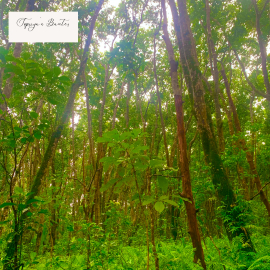
The morning we headed to the Zanzibar’s only national park; the skies were chucking it down by the buckets. My nine-year-old son, an avid animal-lover, fretted the tour would fail. For him, this was the biggest draw of our Zanzibar trip. Rainbow-hued umbrellas jigged over our heads as puddles began plinking and water tippled down the countless massive boughs of the trees at the entrance. But soon, our trepidations were laid to rest.
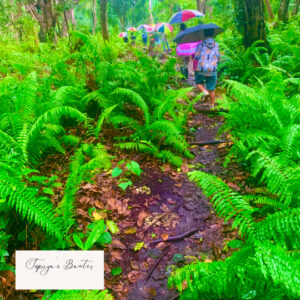
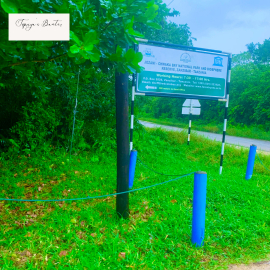
The rains were short-lived; they abated, leaving the verdant flora glistening with a dewy sheen and the sky a shade of pearly blue with the sun tucked in its hem. The weather could not be more conducive for the three-hour tour.
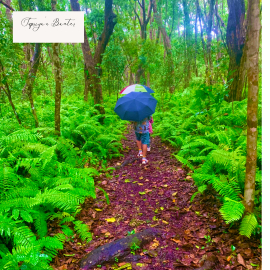
Most European travelers prefer the summer months, but as an Asian, I would take monsoons any day. First, I don’t need the sun beating down my back to acquire a flawless, even tan (naturally blessed, I say). Then, there is always something about the smoky gray clouds, balmy breeze hiding a bit of moisture, and the blue speckled sky that sends my heart racing. Add majestic trees spilling sparkling water from their fronds, and it’s sheer magic.
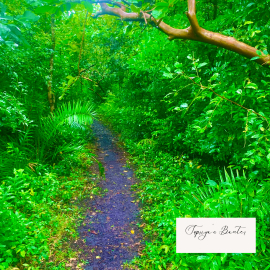
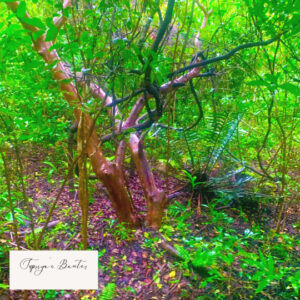
The Jozani bio-reserve sprawls over fifty square kilometers of area and is a mosaic of tropical and coral rag forest, mangrove swamp, and salt marshes.
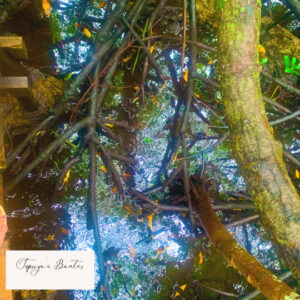
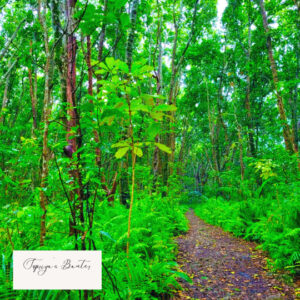
The Tropical coral rag forest
As soon as I stepped into the wooded bushland behind the trained park official, Haidari, it seemed like the door to arcadia had burst open. A dense forest interspersed with the thicket of tall trees stretched as far as my eyes could travel.
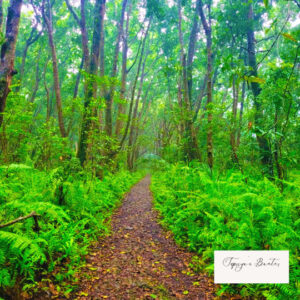
I imagined myself stumbling upon a forest nymph or nature fairy.
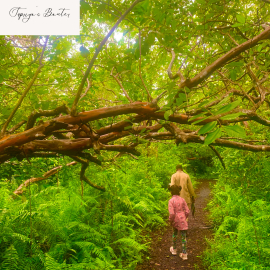
Some trees were taller than usual and greener than ordinary as if they had materialized from the pages of Enid Blyton’s enchanted land. A part of me hoped to see tiny houses carved into the trunks and folks of the Faraway Tree romping on the limbs.
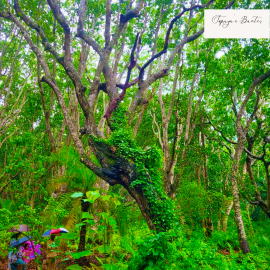
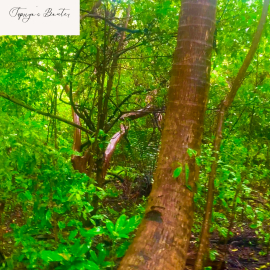
The top branches seemed to head to the ever-changing magical lands of Take-What-You-Want and Do-As-You-Please above the swirling clouds.
I wished I was as lucky as Joe, Beth, or Frannie!
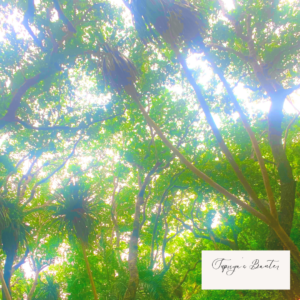
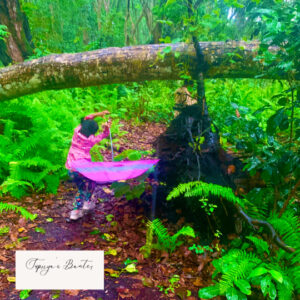
The muddy nature trail was dotted with the broken coral rags of all imaginable shapes, colors, and sizes, reminiscent of the era when the sea submerged this entire land.
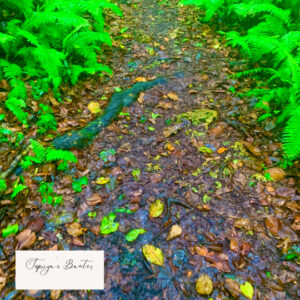
The rubbly limestone, part of an ancient coral reef, crammed the pathway along with the bordering trees’ enormous, entangled, shallow roots.
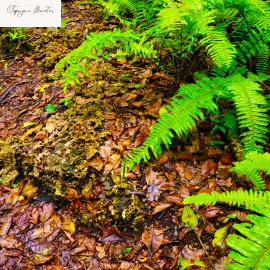
As per Haidari, the forest is divided into two parts facing each other: the plantation spurred by traders for timbre business and the natural groundwater forest.
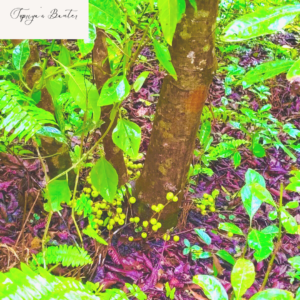
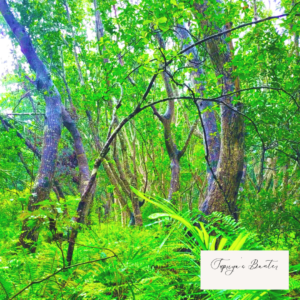
So, on one side of the muddy footpath, there were towering mahogany, eucalyptus, and pine trees. In contrast, on the other side, there were smaller woody plants with upright boles, bushes, and shrubs.
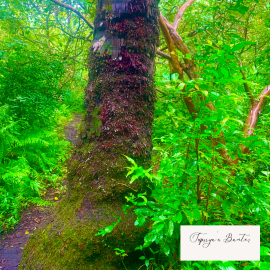
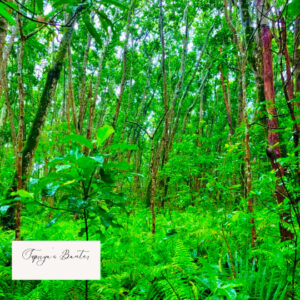
By dint of the woods overlying a porous coral, the roots are gnarly, shallow, and widespread—like an intricate mesh of telephone lines for trees to chitchat.
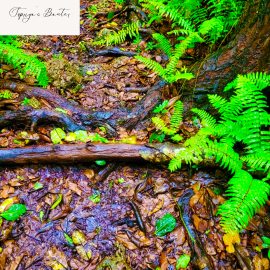
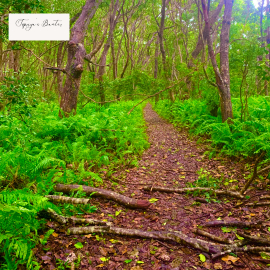
Haidari pointed to screwdriver palms, a stately mahogany tree over two hundred years old, fascinating fig twins, and medicinal plants and herbs.
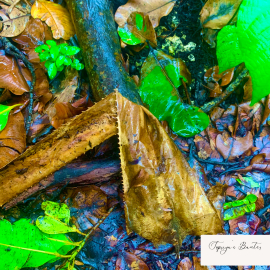
Butterflies frolicked on overhead canopies and bridges construed by bending boughs; the songbirds warbled, and leaves rustled as the wind rushed through the groves.
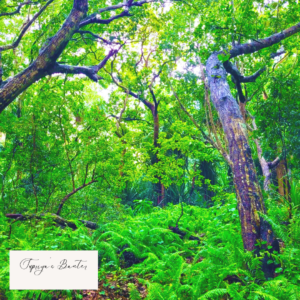
Snails, millipedes, and creepy crawlies crept out of their lairs to bask in the sunshine and hang out with the omnipresent Sykes’ monkeys.
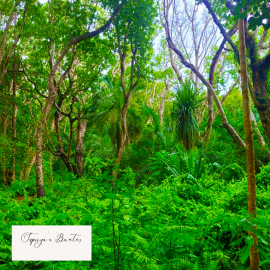
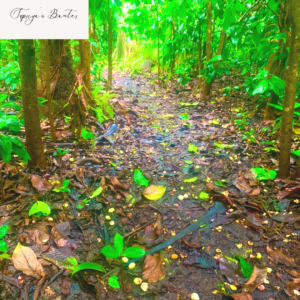
Though we reeked of mosquito spray—a mandate to visit the woodland—the jungle suffused our senses with its stunning beauty. Take a walk in the National Park.
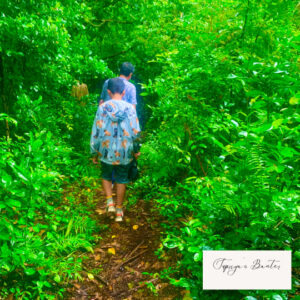
The mangrove
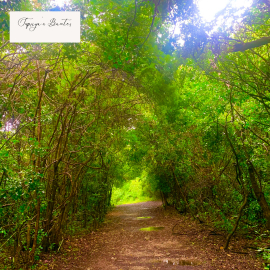
Zanzibar has a fair share of dense tropical wetlands or mangrove swamps as a coastal zone. These hardy species of trees with deep salt tolerant roots are well adapted to loose soils and regular submersion by tides. The flood-prone environment lends the flora a unique ‘swamp-forest’ adaptability. Take a peek into the Mangrove Park.
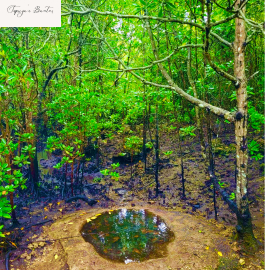
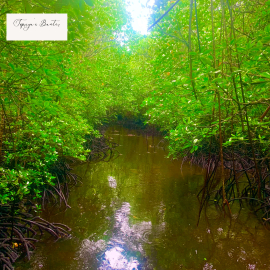
A boardwalk through the creek side mangrove introduced us to three species native to Zanzibar.
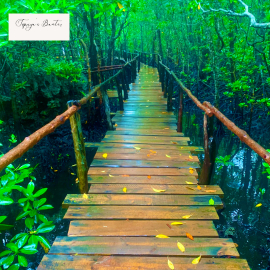
The black mangrove had claw-like roots sticking out from its base and circling the trunk, acting as straws for breathing in air and a strong buttress.
The red mangrove with stilt or prop roots had aerial roots; the white mangrove was identified by the lack of visible aerial roots and the structure of its leaves.
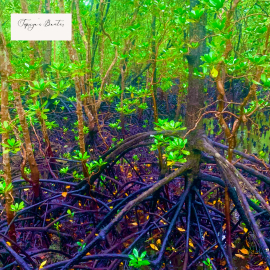
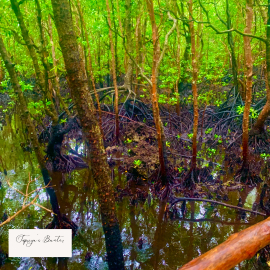
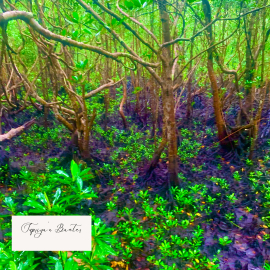
We encountered various tropical fish and crabs flitting between the knotted roots on our stroll. Though Haidari mentioned creatures like civet cats, squirrels, and monitor lizards thriving in this unique bridge between the land and the sea, we didn’t encounter any. An army of ants, spiders, and termites scuttled on the hollow twigs.
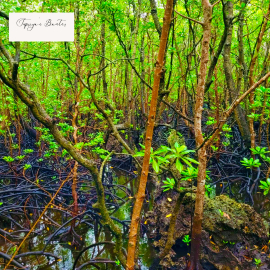
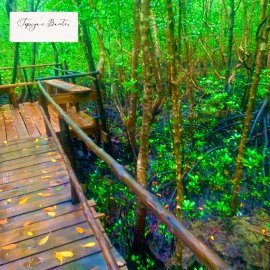
In this medley of chirping starlings, the gurgle of water, and the pattering of rain, the only alien sound was perhaps the loud babble of the tourists and visitors.
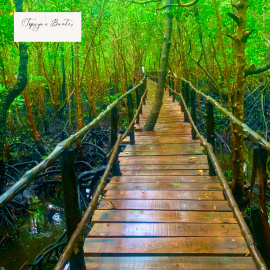
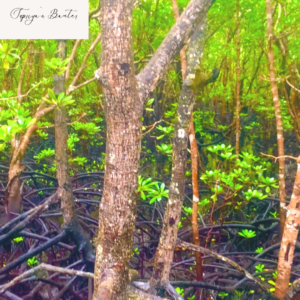
Monkey Madness
The rains had long disappeared, and the olive-green forest and the sinuous mangrove had already set the tropical mood. The only thing remaining now was to eyeball the rare Red Colobus Monkey, endemic to Zanzibar. This endangered and rarest subspecies that once lived on the African mainland is now limited to this island.
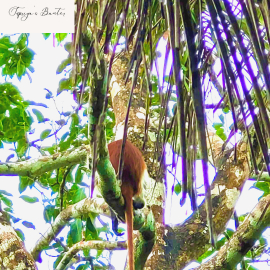
It didn’t count that we had already seen these monkeys in our hotel or hanging around the trees flanking the national park. The kids were determined to see them up close in their conservation zone.
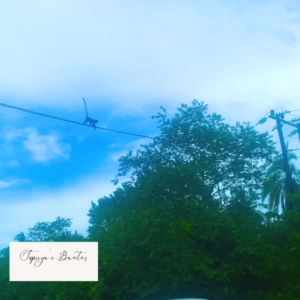
After several rounds of to- and fro conversation amongst the forest guides, we bumped into a troop of this subspecies. Unaffected by curious eyes, the monkeys leaped across trees, putting up an acrobat show. The sight of an adult monkey grooming an infant captivated the little ones.
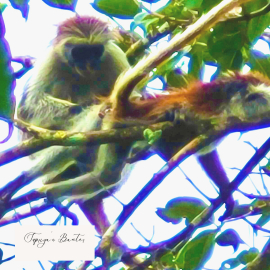
A web of internal tracks led us to other cartloads of these vulnerable primates. Also called kirk’s colobus after the name of the zoologist, who brought this rainforest species to the forefront, these monkeys are called red colobus because of their dark red coat. The word “colobus” is derived from the Greek, meaning “mutilated” because, unlike other monkeys, colobus species have a stumped thumb.
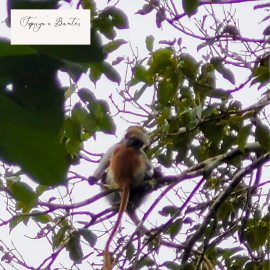
A steady diet of tender leaves, flowers, flower buds, soil, bark, and stalks keeps them satiated. According to our nature guide, the monkeys forage on charcoal to keep organic toxins at bay. Watch the monkeys in their natural habitat.
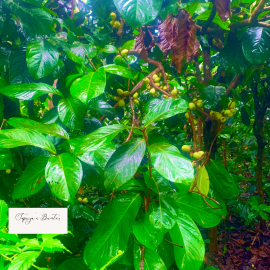

We met another barrel at the exit, engrossed in feeding, grooming, and romping on the treetops. One monkey stopped and stared at my children with intense interest. Do you think he noticed the undeniable, uncanny similarities in the behavior?
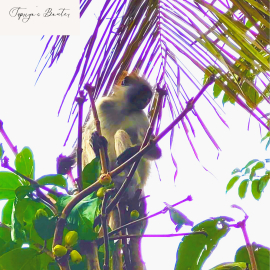
DO I RECOMMEND THE JOZANI NATIONAL PARK?

Yes, if you are a fellow nature lover, you would love the spectacular vista of this tropical forest. The incredible experience of walking through large pandanus trees is fantabulous.
Even more priceless if it is rain-drenched.
The national park is home to a medley of endemic species, some as rare as red colobus; this is a rare opportunity for one to meet the animals in their natural habitat.
A must-do activity for kids.
A FEW POINTERS TO KEEP IN MIND:
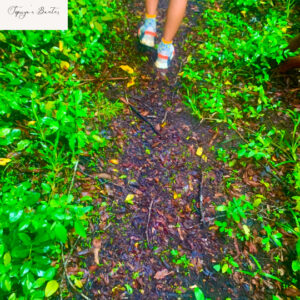
Count a good pair of walking shoes, tons of mosquito repellent, and sunglasses as essentials. I recommend that children dress up in clothes covering their arms and legs to avoid pesky mosquito bites.
As a safety protocol, the park authorities advise their guests not to approach or feed the monkeys. (Mind you, it’s for the safety of the monkeys and not for humans. The park does not want the primates to catch human infections.)
It’s best to keep smaller denominations of Tanzanian shillings at hand for tipping the local guides.
Continue Reading
You can check out my other posts about this beautiful country :
The Residence, Zanzibar-A Paradisial Stay
An Afternoon at a Fishing Village in Zanzibar
A Rendezvous with the Giant Aldabra Centurions—the Prison Island, Zanzibar
Maalum Caves-Zanzibar’s best-kept secret!
 Supriya's Banter
Supriya's Banter




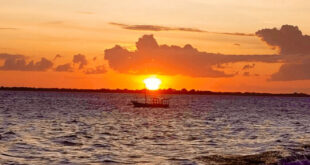
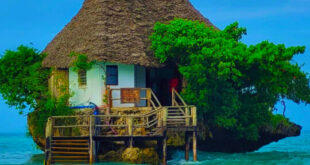
3 comments
Pingback: An Afternoon at a Fishing Village in Zanzibar - Supriya's Banter
Pingback: The Residence, Zanzibar-A Paradisial Stay - Supriya's Banter
Pingback: The Stone Town, Zanzibar - Supriya's Banter